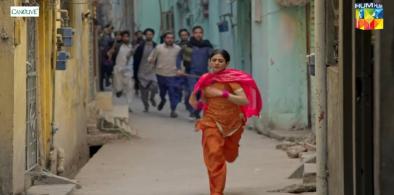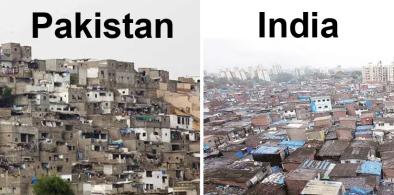South Asian nations must formulate holistic strategies to deal with remittance fall
In 2021, there could thus actually be a drop in remittances - more so after the second wave of Covid 19, and the recent travel restrictions imposed by many countries including those in the Gulf on travelers from South Asia, write Tridivesh Singh Maini and Karan Bidani for South Asia Monitor

Remittances play an important part in the economic growth of developing countries. South Asia is considered to be the largest recipient of remittances in the world. The South Asian region receives more than one-fourth of global remittances, which account for an average of over 10 percent of the Gross Domestic Product (GDP) in the South Asian countries.
Over one-fifth of the global remittances between 2015-2019 came to South Asian nations, with India being the largest recipient - receiving close to USD 360 billion over this whole period. Remittances to South Asian countries exceed the Foreign Direct Investment (FDI) or any aid they receive from their respective donors, except for Afghanistan and Maldives (in 2019, remittance flows to all low and middle-income countries exceeded FDI).
If one were to examine remittances as a part of the overall GDP in the South Asian region, Nepal is right on top. In 2019 and 2020, remittances accounted for more than a quarter of the country’s GDP. Sri Lanka is second with remittances contributing to 8.3 percent of its GDP, Pakistan is third with 7.1 percent, followed by Bangladesh (6.2 percent, India (2.9 percent), Bhutan (1.8 percent) and Maldives (0.1 percent).
Most of the remittances flowing into the region come from Gulf Cooperation Council (GCC) nations (Bahrain, Kuwait, Oman, Qatar, Saudi Arabia and the United Arab Emirates). The oil boom in the 1970s has led to a steady rise in the immigration of blue-collared workers from South Asia to the Gulf. After the Gulf, the US is the second-largest contributor to remittances to South Asia, followed by the UK, European Union, Canada and Australia.
Pandemic impact
The World Bank had forecast in April 2020 that remittances to LMIC countries would drop (in 2019, LMIC countries had received 548 Billion USD) and that remittances to South Asia would fall over 20 percent, as a result of Covid 19.
The pandemic had resulted in a large chunk of blue-collared workers from the Gulf returning home. There is no doubt that South Asian countries witnessed a dip around the second quarter of 2020, but all countries recorded growth in terms of remittances by the end of 2020.
The growth in remittances to Bangladesh was 18.6 percent, Pakistan saw a growth of 17.6 percent, Nepal witnessed 6.7 percent growth in the first half of the fiscal year 2020-21 and Bhutan had a 200 percent year-on-year increase for the whole of 2020 (Apart from India and Maldives all other nations in the region saw an increase in remittance inflows in 2020).
These figures defy the early estimates which had predicted a significant dip in remittances. The increase in remittances has been attributed to the migrants switching to more formal networks of transferring money back to their home country. Travel restrictions compelled the migrants to use official channels in transferring money, which led to a significant rise in the inflows of remittances. In 2021, there could thus actually be a drop in remittances - more so after the second wave of Covid 19, and the recent travel restrictions imposed by many countries including those in the Gulf on travelers from South Asia.
Effect on India
If one were to look specifically at India, remittances have contributed towards the growth of many states, although, such form of inflows do not count directly towards the GDP of the state. The private transfers made by the migrants to their households for purposes such as family maintenance, education, play a pivotal role in driving their local economy, which in turn boosts the state's GDP.
According to the Reserve Bank of India (RBI) data of 2018, more than 50 percent of remittance inflow went to Kerala, Maharashtra, Karnataka and Tamil Nadu. Kerala tops the list with a 19 percent share of total remittances, followed by Maharashtra (16.7 percent), Karnataka (15 percent) Tamil Nadu (8 percent) and Delhi (5.9 percent). However, a new list compiled by the Ministry of External Affairs shows an increase in migration of blue-collared workers from North Indian states, especially Uttar Pradesh, Bihar and Rajasthan, to the Gulf. As a result, these states too have become dependent upon remittances from the Gulf.
The state of Punjab has also been dependent in the past on remittances - mostly from the western nations. In recent years, outward remittances have exceeded inward remittances, following a drastic increase in the number of Punjabis migrating to western countries -- specifically Canada and Australia. As a result of Covid 19, there could be a drop in inward remittances as well, and this could impact the economy of the North Indian state.
Along with other post-Covid 19 issues, the return of blue-collared workers from the Gulf will pose a double challenge. First, the economies of these states will have to find employment avenues for these workers. Second, the economies will need to adopt a new approach that can make up for the drop in remittances. Kerala, which was witnessing a drop in remittances, has already started creating schemes for blue-collared workers returning from the Gulf.
Challenges for South Asia
The economic slowdown in other parts of the world post-Covid 19 is also likely to have an impact on inward remittances. In 2020, India had received remittances from the US. It remains to be seen if it does so this year as well. It is important not just for the central government and the states to work together, but also for the states to learn from each other’s policies for rehabilitating workers compelled to return home.
If one were to look at the South Asian context, it has been argued, that since a likely drop in remittances could be a common challenge for the whole region, all countries can work under the umbrella of the South Asian Association for Regional Cooperation (SAARC) and several other multilateral organizations. South Asian countries also should consider a holistic strategy to deal with this challenge.
Post-Covid 19, South Asian countries are likely to face numerous challenges, including a possible drop in inward remittances. They need to come up with an innovative strategy to deal with the economic impact of the same. The impact of this drop will not be uniform; so the approach to deal with the change cannot be a one-size-fits-all approach.
(Tridivesh Singh Maini is a New Delhi-based policy analyst associated with The OP Jindal Global University, Sonipat, India. Karan Bidani is Research Associate at Citizens Foundation for Policy Solutions, New Delhi. The views expressed are personal. Mr. Maini can be contacted at tsmaini@jgu.edu.in)




















Post a Comment